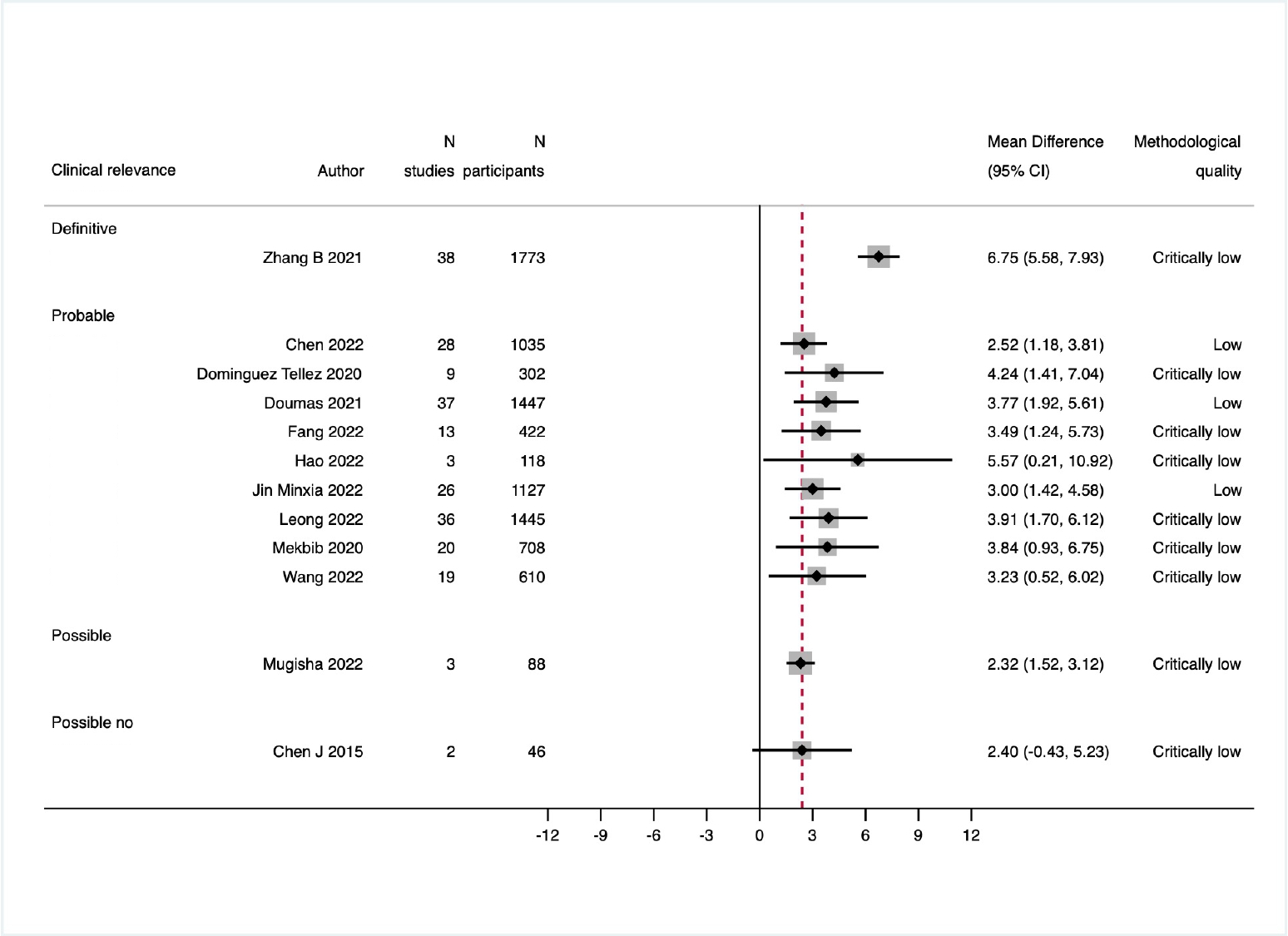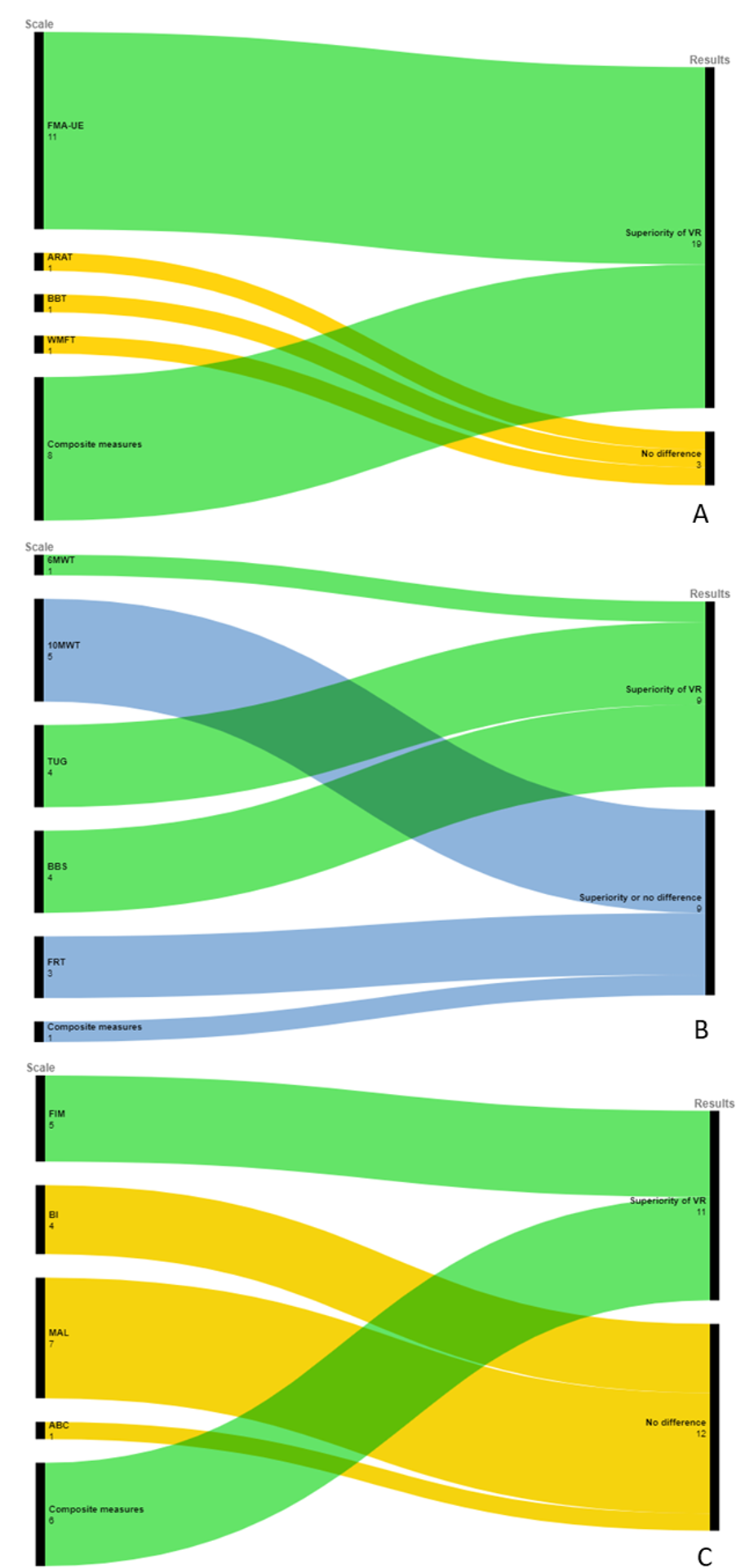Molte meta-analisi sono in accordo sull’efficacia e la sicurezza della riabilitazione con realtà virtuale dopo l’ictus: una overview di revisioni sistematiche
Agreement among multiple meta-analyses on the effectiveness and safety of virtual reality rehabilitation after stroke: an overview of systematic reviews
Introduction
Worldwide, stroke is the second leading cause of death and a major cause of disability, with over 12 million new strokes reported each year. With advances in health technologies, the range of interventions for stroke survivors is in continuous expansion. Among these, virtual reality (VR) in neurorehabilitation has proved an engaging, interactive, patient-centred, and relatively inexpensive modality to enhance functional recovery. We aim to conduct an overview of systematic reviews exploring the agreement on the effectiveness and the safety of VR technologies for clinical outcomes in stroke survivors to give a comprehensive balance of effects.
Methods
We searched multiple databases up to 17 January 2023 for systematic reviews comparing any kind of VR technology (with or without conventional therapy) versus conventional therapy alone. The primary outcome was upper limb function and activity. The secondary outcomes were gait, mobility and balance, limitation of activities, participation, cognitive and mental function and adverse events. Methodological quality was assessed using the A MeaSurement Tool to Assess systematic Reviews (AMSTAR 2) and the certainty of evidence (CoE) using the Grading of Recommendations, Assessment, Development, and Evaluations (GRADE) approach. Considering reviews assessing the same clinical questions on the same outcome measurement, we examined concordance and discordance of meta-analyses effects sizes (i.e., effective intervention vs no difference) using a conceptual framework based on the Jadad algorithm.
Results
We included 58 reviews of 345 unique primary studies. Overall, 42 (72.4%) had conducted meta-analysis Many reviews assessed mixed (e.g., both subacute and chronic) (69%) or chronic onset of stroke (17.2%) and were judged critically low in quality by AMSTAR 2 (77.2%). For the primary outcome, meta-analyses reported discordant findings in the direction of effects. Applying the Jadad algorithm, VR with or without conventional therapy seems to be more effective than conventional therapy alone on upper limb function (Fugl-Meyer Assessment for Upper Extremity [ FMA-UE ]), with low to moderate CoE and possible to definite clinical relevance (Figure 1). For secondary outcomes there was uncertainty about the superiority or no difference between groups due to substantial heterogeneity of measurement scales (Figure 2). A few reviews (n=6) reported the occurrence of mild adverse events.
Discussion and Conclusion
Current evidence suggests that multiple meta-analyses agreed on the superiority of VR combined or not with conventional therapy over conventional therapy on FME-UE. These findings support the hypothesis that VR may help to improve the recovery of upper limb motor function and quality of movement. As a safe intervention, clinicians should consider embed VR technologies into their practice and adapt them according to patients’ needs and preferences. Caution in the interpretation of findings is warranted given the poor methodological quality of the reviews.
REFERENCES
Collaborators, G. B. D. Stroke. “Global, Regional, and National Burden of Stroke and Its Risk Factors, 1990-2019: A Systematic Analysis for the Global Burden of Disease Study 2019.” Lancet Neurol 20, no. 10 (Oct 2021): 795-820.
Imbimbo, I., D. Coraci, C. Santilli, C. Loreti, G. Piccinini, D. Ricciardi, L. Castelli, et al. “Parkinson’s Disease and Virtual Reality Rehabilitation: Cognitive Reserve Influences the Walking and Balance Outcome.” Neurol Sci 42, no. 11 (Nov 2021): 4615-21.
Jadad, A. R., D. J. Cook, and G. P. Browman. “A Guide to Interpreting Discordant Systematic Reviews.” [In eng]. Cmaj 156, no. 10 (May 15 1997): 1411-6.


